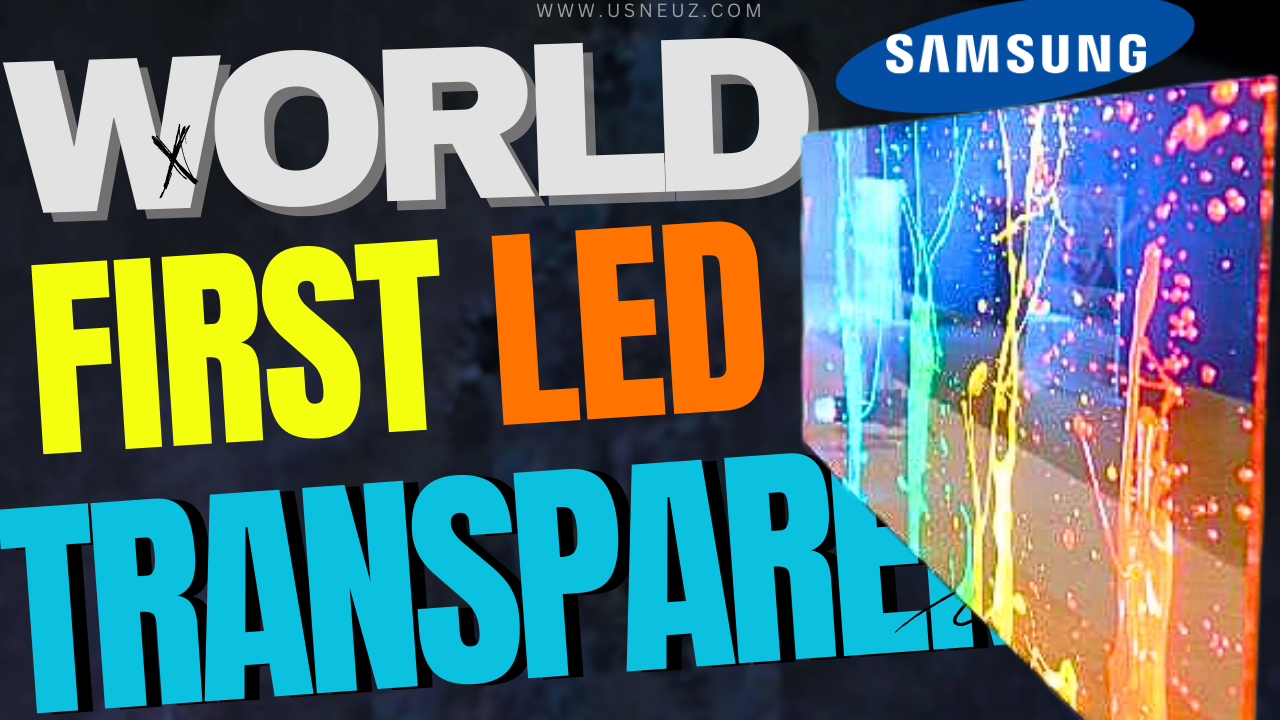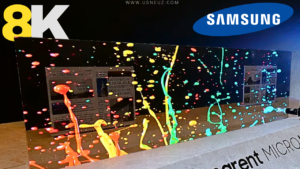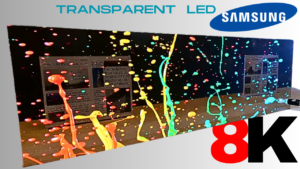
Transparent: World’s First Micro-LED 2024
“Here is the future of technology: Samsung has propelled us into the future by unveiling the world’s first transparent LED in 2024, setting the stage for the latest breakthroughs in the LED world. This remarkable achievement is just one facet of Samsung’s commitment to pushing the boundaries of visual technology, as demonstrated by the extraordinary lineup of televisions showcased at CES 2024. Boasting cutting-edge artificial intelligence and a revolutionary glare-free OLED model, Samsung’s innovations mark a new era in the world of TVs.” Here are the features of the world’s first transparent LED…
Table of Contents
ToggleTransparent LED Features
8K Brilliance
Samsung’s new 8K QLED TV, the QN900D, takes center stage with AI-powered upscaling technology, addressing the scarcity of native 8K content. The AI Upscaling Pro feature converts 4K content into 8K and HD/SD media into 4K, providing viewers with an unparalleled visual experience. The QN900D, touted as the slimmest and most premium 8K TV in the market, includes features like sports tracking and Real Depth Enhancer Pro for heightened contrast.

For those seeking a more budget-friendly 8K option, Samsung introduces the QN85D, maintaining impressive display quality while foregoing some of the advanced AI conversion features.
OLED Innovation
In the OLED category, Samsung introduces the S90D and S95D, ranging from 55 to 77 inches. The S95D boasts the revolutionary “OLED Glare Free” technology, ensuring an optimal viewing experience in both bright and dark rooms. A mere 11mm thick, the S95D features a 4K 144Hz panel and AI-enhanced color accuracy validated by Pantone.
MUST READ: Galaxy S24 Ultra: 4 Must-See Features Before
AI Customization Mode
Samsung’s commitment to immersive audio experiences is evident in the Active Voice Amplifier Pro, present in both QLED and OLED models. This feature enhances dialog and key sound effects, elevating the audio quality. The AI Customization Mode further personalizes the viewing experience, optimizing picture settings based on user preferences.
Ultra-Large Screens
To address the challenge of pixel visibility on larger screens, Samsung introduces the Supersize Picture Enhancer feature. This utilizes AI upscaling to enhance sharpness and reduce visible noise on each pixel, enhancing the perceived sharpness of larger TVs.
Transparent Displays Future
At the First Look event, Samsung teases the world’s first transparent micro-LED display, offering three different designs, including models with tinted glass panels for enhanced visibility and aesthetics. These transparent micro-LED displays create a unique hologram-like effect, boasting sharp images and minimal impact from ambient light.
While official pricing details are yet to be disclosed, Samsung’s 2024 TV lineup promises an immersive, personalized, and glare-free viewing experience, setting a new standard for television innovation. Stay tuned for more insights as Engadget explores the hardware and software features in Samsung’s latest televisions during CES 2024.
PRICE
So, we don’t know the exact price yet. However, considering that MicroLEDs are already quite expensive, and making them transparent adds more complexity, we can expect the transparent MicroLED to cost a lot more than regular TVs and displays.
Here are a few things to keep in mind:
- Early Development: The transparent MicroLED is still being worked on, so the final version might be different from what we saw at CES.
- Modular Panels: Samsung’s “CLEAR The Wall” uses panels that you can put together. The final cost might depend on how big and how you configure your setup.
- Who it’s For: At first, this tech might be aimed at really fancy homes or businesses, and that could make it even pricier.
We don’t know the exact cost yet, but it’s pretty safe to say that when Samsung’s transparent MicroLED is ready to buy, it’s going to be a super high-end product.
FAQ
-
What is transparent LED?
A transparent LED (light-emitting diode) is a display technology utilizing LEDs embedded in a transparent material. This enables the passage of light while still presenting images or content, resulting in a distinctive effect where displayed information appears to float or seamlessly integrate with the surroundings.
-
What are the features of LED displays?
LED displays offer various advantages, including:
- High Brightness: Suitable for outdoor use and direct sunlight.
- Wide Viewing Angles: Clear visibility from nearly any angle.
- Energy Efficiency: Lower power consumption compared to other display technologies.
- Long Lifespan: Extended operational life lasting many years.
- Vivid Colors: Capable of producing a broad spectrum of colors with high contrast.
-
Who makes transparent LED film?
Several companies manufacture transparent LED film, such as:
- LG Display: Known for the “Transparent OLED” technology with high transparency and vibrant colors.
- Samsung Display: Offers “CLEAR The Wall,” a modular transparent LED display system.
- Plex Display: Provides customized transparent LED film solutions for various applications.
- ROE Visual: Features the “Sparkling” series, offering high-resolution transparent LED panels.
-
Do transparent computer screens exist?
While not widespread, prototypes and concept devices featuring transparent computer screens exist. These designs typically incorporate transparent OLED or LED technologies, presenting futuristic possibilities for immersive user experiences.
-
How does a transparent TV work?
Transparent TVs, like LG’s “OLED TV R,” use layers of transparent OLED panels. These panels display images while allowing light to pass through, creating a visually striking effect where the TV seemingly disappears when turned off.
-
When was the first LED display made?
The first practical LED display was developed in 1962 by General Electric. Since then, LED technology has undergone significant advancements, leading to its diverse applications today, including transparent displays.
-
Do transparent monitors exist?
While not commercially available yet, prototype transparent monitors have been showcased by companies like Samsung and BOE. These prototypes hint at intriguing possibilities for future workspace designs.
-
What is the difference between transparent OLED and transparent LCD?
Both technologies offer transparency but differ in key aspects:
- OLED: Requires no backlight, resulting in thinner displays and enhanced transparency. However, OLED may be more susceptible to burn-in and has higher manufacturing costs.
- LCD: Requires a backlight, resulting in thicker displays with lower transparency. However, LCDs are generally more affordable and less prone to burn-in.
-
What is a transparent LED screen?
A transparent LED screen is a display constructed with transparent LED modules. This design allows light to pass through while showcasing images or information, creating a visually captivating and innovative display solution.

“Here is the future of technology: Samsung has propelled us into the future by unveiling the world’s first transparent LED in 2024, setting the stage for the latest breakthroughs in the LED world. This remarkable achievement is just one facet of Samsung’s commitment to pushing the boundaries of visual technology, as demonstrated by the extraordinary…
“Here is the future of technology: Samsung has propelled us into the future by unveiling the world’s first transparent LED in 2024, setting the stage for the latest breakthroughs in the LED world. This remarkable achievement is just one facet of Samsung’s commitment to pushing the boundaries of visual technology, as demonstrated by the extraordinary…